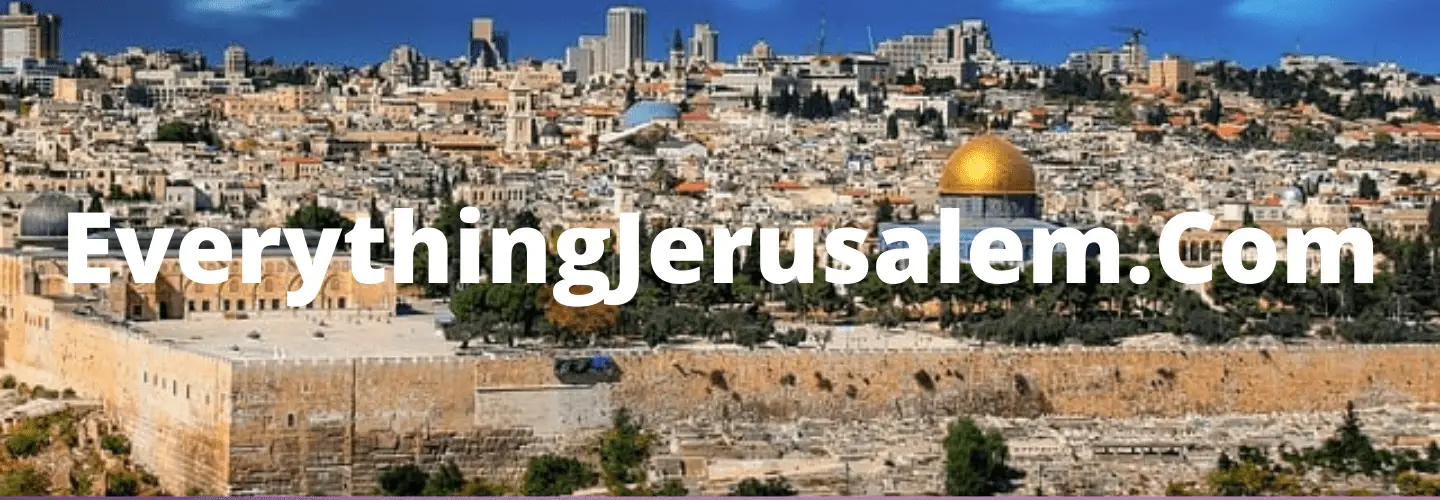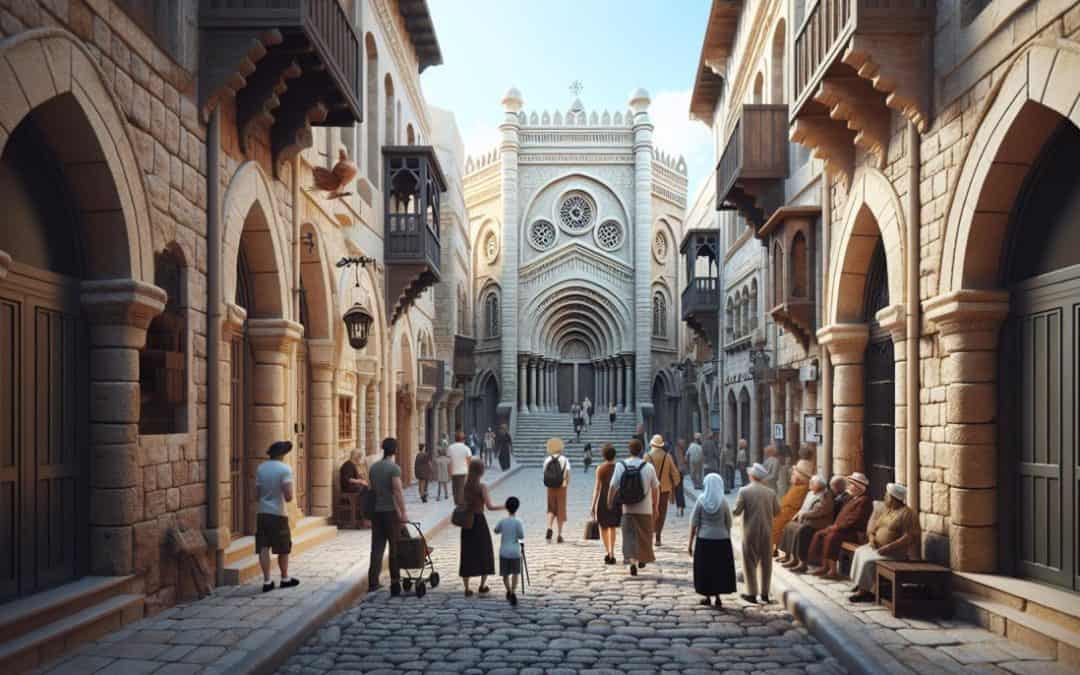Nestled in the Northern District of Israel, Safed is more than just a city. It’s a living, breathing testament to centuries of Jewish history, culture, and spirituality. As we embark on this journey together, we’ll explore the ancient synagogues and unravel the rich tapestry of Safed’s past.
From the cobbled streets to the weathered stone walls, every corner of Safed whispers tales of the bygone era. It’s a place where history isn’t just remembered, it’s lived. So, strap on your adventure boots and let’s dive into the heart of Jewish heritage.
In the following sections, I’ll be your guide through the winding alleys of Safed, unveiling the city’s secrets and sharing fascinating anecdotes. Whether you’re a history buff, a spiritual seeker, or simply a curious traveler, there’s something in Safed for everyone. Let’s get started, shall we?
The Historical Significance of Safed in Jewish History
Immersed in age-old traditions, Safed stands as a testament to the enduring strength of Jewish culture, serving as a repository of faith and history.
The Origins and Early Settlements
Steeped in mysticism, Safed’s origins are as old as the hills it nestles between. The roots of Safed stretch deep into the past, leading to the time of the First Temple around 900 BC. Archaeological pieces, like pottery shards, provide a glimpse of these bygone days, further asserting Safed’s robust Jewish past. Evidence of a Jewish presence including ancient ritual baths (mikvaot) and mezuzah niches attest to Safed’s importance as a sacred Jewish site even from its earliest days.
Safed During the Ottoman Empire
Fast-forward a few centuries, and we find Safed burgeoning under Ottoman rule. In the 16th century, Safed became an epicenter for Jewish learning during the Ottoman Empire’s reign. Distinguished scholars and mystics, akin to Rabbi Joseph Karo and Rabbi Isaac Luria, called the city home, imbuing Safed with intellectual and spiritual vigor. The city’s Jewish quarter flourished, and Safed’s temperate climate and spiritual ambiance became a beacon for great minds. The period was a golden one for Safed, embedding it deeply in the Jewish collective consciousness, its legacy carrying through to our times.
Architectural Marvels: The Synagogues of Safed
The cradle of Judaism’s undulations crisscross through the architectural wonders of Safed. At their core are the synagogues, ornate and stunning, each one a tangible testament to Safed’s glorious Jewish lineage.
The Ari Ashkenazi Synagogue
Refined in its simplicity, the Ari Ashkenazi Synagogue holds a position of spiritual significance. Constructed in the 16th century named after Rabbi Isaac Luria, fondly known as the Ari, it served as his spiritual sanctuary. Deep within its walls, he distilled his Kabbalistic teachings, actions that had far-reaching implications on Jewish mysticism. Damaged by an earthquake in 1837, its rebuilding occurred nearly a century later, with retentions of its traditional charm. A High Holy Ark made of olive wood and a colorful stained-glass window reflecting the Numerical values of the Kabbalistic Ten Sefirot add to its artistic allure.
The Abuhav Synagogue
Exceptionally preserved architectural features make the Abuhav Synagogue a visually captivating marvel. Named after the Rabbi and philosopher, Isaac Abuhav, it’s a fitting monument to his profound contributions to rabbinical literature. Echoes of three of Rabbi Abuhav’s original Torah Scrolls still whisper among the synagogue’s sacred relics. It harbors an impressive Holy Ark, painstakingly carved from olive and cedar wood, embedded with Kabbalistic symbols that radiate an ethereal sparkle under the solemn gaze of the eternal light.
The Yosef Caro Synagogue
Last in line but no less significant is the Yosef Caro Synagogue. Chronologically connected to the other landmarks, it proffers a momentous structure of conservation. Built in the 16th century by Rabbi Yosef Caro, author of the fundamental Jewish law book, Shulchan Aruch, it showcases his academic prowess. The synagogue, largely untouched by time, proudly displays an original Holy Ark. This centuries-old structure knits a captivating narrative of Safed’s profound connection to Jewish law and spiritualism.
Safed’s Role in the Development of Kabbalah
Safed boasts a profound reputation as the cradle of Kabbalah. Its pivotal role traces back to mystic and scholarly discoveries resonating throughout centuries.
The Emergence of Jewish Mysticism
Safed emerges in historical annals not just for its synagogues and scholars, but also for its unique flair for Jewish mysticism, Kabbalah. The serene, lofty city became a fertile breeding ground for Kabbalistic thought during the 16th century, a period often referred as the “Golden Age of Jewish Mysticism.” Three factors significantly shaped Safed’s mystic lore: the influx of Jewish immigrants, the establishment of mystical study circles, and the impact of the Expulsion from Spain.
Firstly, I highlight the role of Jewish immigrants, specifically those from Spain, post the catastrophic expulsion in 1492. Seeking solace and identity, they found both nestled in Safed’s welcoming hands, and they brought with them the seeds of Kabbalah concealed in their hearts.
Next in the array, we have mystical study circles. These circles, or kabbalistic collegiums, engaged deeply in the study, development, and dissemination of Jewish mystic ideology. Such congregations, often led by scholars like Rabbi Isaac Luria and Rabbi Moshe Cordovero, acted as crucibles, refining the raw, esoteric Kabbalistic concepts into systematic and comprehensive doctrines.
Lastly, we cannot overlook the socio-cultural impact of the Expulsion from Spain, which considerably influenced the course of Jewish mysticism in Safed. This momentous incident resonated echoingly within Safed’s spiritual landscape, prompting Jews to search deeper into their faith, a quest perfectly suited for Kabbalah’s cosmic, transcendent dimensions.
Famous Kabbalists from Safed
Famed Kabbalists from Safed further enriched its already shimmering mystic legacy. These luminaries include, but certainly aren’t limited to, Rabbi Isaac Luria and Rabbi Moshe Cordovero.
Rabbi Isaac Luria, popularly known as the Ari or Lion, is arguably one of the most influential figures in the realm of Jewish mysticism. His innovative ideas, collectively known as Lurianic Kabbalah, offered radical perspectives on creation, divine presence, and redemption, significantly reshaping Safed’s spiritual milieu.
Featuring next is Rabbi Moshe Cordovero, an equally esteemed scholar profoundly vested in Jewish mystic thought. Known for his comprehensive and systematic approach to Kabbalah, Cordovero authored Pardes Rimonim (“Orchard of Pomegranates”), a classic treatise navigating the intricate labyrinth of Jewish mystic ideology.
Cultural Impact and Modern Safed
Diving deeper into Safed, I’m intrigued by its cultural influence and modern persona, which add layers to its rich Jewish heritage.
Arts and the Artist Colony
A stroll through the Artist Colony of Safed offers an enchanting journey into a tapestry of creativity, a testament to the city’s cultural impact. Safed’s Artist Colony, established in the 1950s, has become a hub of artistic expression, with many artists and craftsmen setting up galleries and studios here. The colony offers a vibrant array of mediums, from delicate pottery and intricate jewelry to spirited paintings that capture Safed’s mystical essence. The annual Klezmer Festival, an international music event celebrating traditional Jewish Klezmer music, is another exciting rite that enlivens Safed’s art scene.
Notably, Safed’s art movement isn’t limited to the physical realm; it also resonates within its spiritual dimensions. The artists often create works that reflect the city’s Kabbalistic inspirations, infusing their art with a deeper, more profound sense of spirituality.
Safed Today: A Tourist Destination
Coming to the present day, unsurprisingly, Safed’s rich history, culture, and art haven’t gone unnoticed. Today, Safed is a prominent tourist destination that beckons visitors from all corners of the globe. Tourists revel in the ancient city’s mesmerizing landscapes, historic synagogues, cobblestone streets, the hum of age-old mystical verses, and the burst of colors from the Artist Colony. Traditional stone houses, maze-like alleyways, and the breathtaking views of the surrounding Galilee landscapes are a feast for the senses and the soul alike.
Moreover, Safed’s status as the center of Jewish mysticism continues to fascinate tourists and scholars alike. Numerous workshops, classes, and tours delve into Kabbalah, offering immersive experiences to those curious about Safed’s mystical legacy.
In essence, Safed seamlessly marries its past with the present, its mysteries with the everyday, and its spirituality with creative expression. What once was the bedrock of Jewish tradition and mysticism, retains its stature today, perhaps with even more layers, more vibrancy, and a ceaseless charm.
Conclusion
So there you have it! Safed isn’t just a city; it’s a living testament to Jewish culture and faith. From its ancient roots to its modern persona, it’s a place where the past and present coexist, offering a unique blend of history, art, and spirituality. Whether you’re walking down its cobblestone streets, visiting its historic synagogues, or exploring its vibrant art scene, you’re stepping into a tale that’s centuries old. And who knows? Maybe you’ll find a bit of that mystical essence that’s shaped Safed over the years. It’s a city that continues to inspire, educate, and fascinate, a cradle of Judaism that’s well worth a visit. So, if you ever get the chance, don’t miss out on experiencing Safed’s rich tapestry of history and culture. Trust me, it’s a journey you won’t forget.

